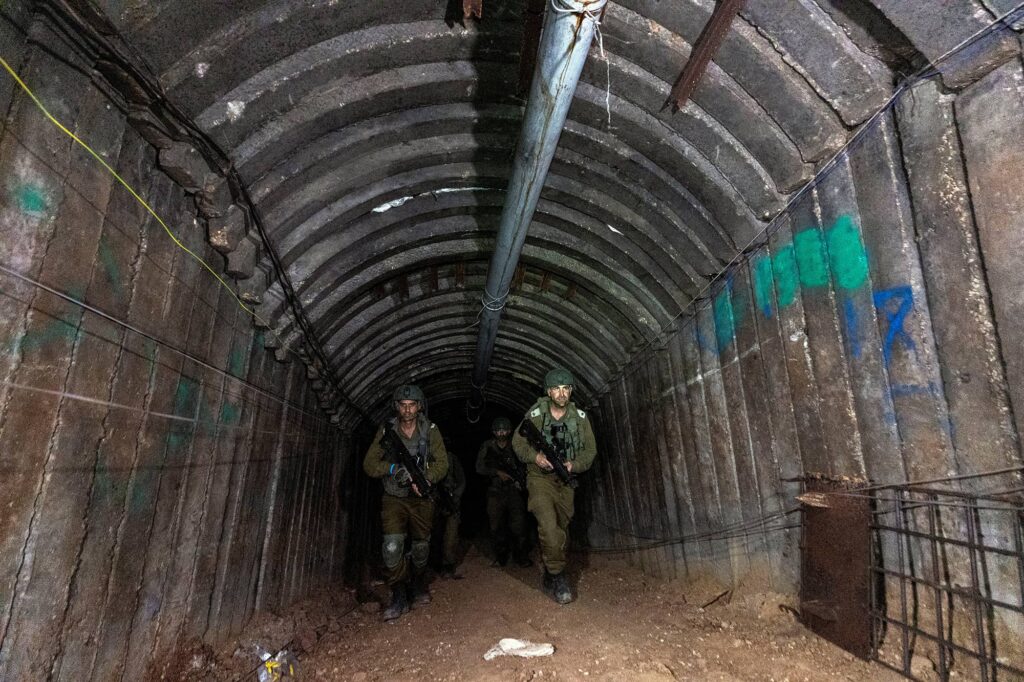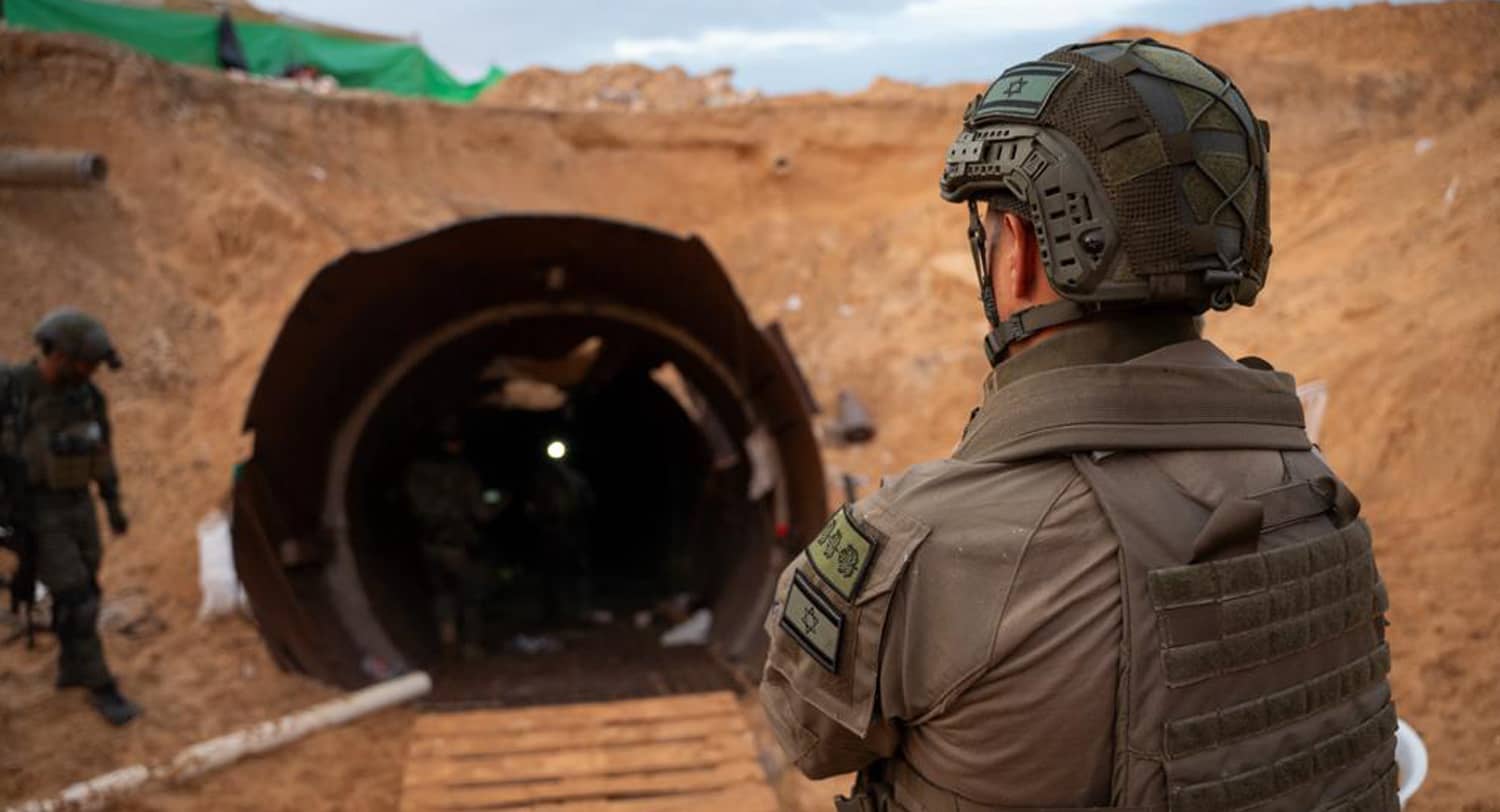The Israeli military can prevent more attacks like the one on October 7, but achieving genuine peace depends on the Palestinians.
Two major questions loom over the ongoing Israeli military operation in the Gaza Strip: can the Israeli Defense Forces (IDF) achieve their military goals there? And can postwar political arrangements that will make future Israeli military action in Gaza unnecessary be put in place? The answer to the first question is probably yes; the answer to the second is probably no.
As to the first, the IDF will not be able to kill or capture every one of the estimated 30,000 to 40,000 fighters deployed by Hamas, the organization responsible for the murderous assault on southern Israel on October 7, 2023 that killed 1200 people and took an additional 240 hostage. Nor can it eradicate the ideas that motivate Hamas’s leaders and their followers. It can, however, ensure that attacks like those of October 7 will not be repeated. An observation by Aviv Kochai, a former Israeli Chief of Staff, provides a clue to the main requirement for Israeli military success in Gaza. He noted that Hamas had morphed over the years from a terrorist organization, engaging in guerrilla tactics against Israel, into a full-fledged army.
Indeed it has. It is organized like an army, with platoons, battalions, and brigades. It has a large arsenal of powerful weapons including rockets and missiles that it has fired at Israel. It has its own defense industry that manufactures its armaments. What is distinctive, and crucial, about this army is that it is based underground, in the hundreds of miles of tunnels that Hamas dug and reinforced after seizing power in Gaza in 2007. Before October 7, the tunnels largely protected Hamas from Israeli airstrikes, permitting it to grow increasingly powerful and dangerous.
The most important task of the IDF operation in Gaza is to destroy the tunnels. This is a protracted, arduous, perilous activity; Hamas fighters continue to hide in them to mount attacks on Israeli soldiers. Achieving this goal depends not only on the bravery of Israeli soldiers but also on the skill of Israeli combat engineers, who have the job of blowing up the tunnels or otherwise rendering them uninhabitable. To the extent that Israel can destroy these subterranean redoubts, whatever remains of Hamas will have to operate above ground, where it will be vulnerable to Israeli firepower. An above-ground Hamas, even greatly reduced in strength as a consequence of the Israeli military campaign, will continue to launch isolated attacks on Israeli targets; but it will be transformed from an army back into a terrorist organization. Exposed to Israel’s airpower and to attacks from Israeli ground forces, it will not be able to mount assaults on the scale of those of October 7.
Of course, the best possible outcome of the war in Gaza would be the cessation of all attacks on Israel from its south. That, unfortunately, is unlikely: whatever postwar political arrangements are put in place will almost certainly not end them.

The Biden administration has made known its preference that the Palestinian Authority (PA), now ensconced in the West Bank, take responsibility for governing Gaza after the main fighting concludes. Such an arrangement would relieve Israel of responsibility for the territory, which it tried to relinquish through unilateral withdrawal in 2005, when it removed more than 9000 Israelis living in 25 communities there. A Palestinian government would bring Gaza into conformity with the widely-held precept that every people ought to govern itself.
The PA is unlikely, however, to be either willing or able to stop attacks on Israel. It is weak, corrupt, ineffective, and unpopular with Palestinians. Its president, 88-year-old Mahmoud Abbas, is currently serving the 19th year of what was supposed to be a four-year term. No Palestinian presidential election has taken place since 2005. Moreover, while the PA differs from Hamas in important ways, and the two are rivals for power, their political outlooks have considerable overlap. The PA, too, churns out vile anti-Jewish propaganda. It, too, insists that all those who left Israel when it was created in 1948 – most of them because of the war that the Arabs instigated in an effort to destroy the new Jewish state – and all of their many descendants must be allowed to return to Israel, a demand that not only has no historical or legal basis but is also a formula for the end of the Jewish state.
The PA supports anti-Israel terror, giving money to the families of those who engage in it. Its leaders, first Yasir Arafat and now Abbas, have always refused Israeli offers of a state and have never made any serious counter proposals. In so doing they have been listening to their constituents. A wartime poll of Palestinians found that 72 percent of respondents believed the attacks of October 7 were “correct,” with 82 percent of those in the West Bank and 57 percent in Gaza taking this position. Polls of Palestinian opinion have also shown an overwhelming rejection of the goal, which the international community has embraced, of having two states, Israel and Palestine, living peacefully next to each other. Most Palestinians do not accept the legitimacy or the permanence of Israel.
All this makes Palestinian nationalism the only one of the many nationalist movements that have appeared since the nineteenth century that has as its aim not the creation of its own nation-state but rather the destruction of the state of another people. (Just why this is so is a complicated social, political, historical, and cultural question. The place to begin to seek an answer to it, as to all questions about the Middle East, is in the works of the great historian of the region, the late Professor Bernard Lewis, particularly his short 2002 book What Went Wrong?).
Nor will the withdrawal of Israeli forces from Gaza change the Palestinians’ attitudes toward the Jews and their state. To the contrary, it is all too likely to be regarded as a sign of Israeli weakness, thereby fortifying those attitudes. Israel’s withdrawals from parts of the West Bank under the terms of the Oslo Agreement of 1993, from the south of Lebanon in 2000, and from Gaza in 2005, all failed to produce good will. Instead, they led to campaigns of terror against Israel. Palestinian rejection of Israel is the essential, animating cause of the conflict between the two peoples. Israelis do not have the power to change it; they can only respond to its consequences.
Perhaps this time Palestinian attitudes will change. Because Hamas secreted itself deep underground after conducting the massacres of October 7, Israel was obliged to fight the war that those massacres began in a way that has brought more destruction to Gaza than any Arab population has suffered in any previous Arab-Israeli conflict. Perhaps the Palestinians will draw from this experience the conclusion that their decades-long effort to abolish the Jewish state has become too costly to sustain. Or perhaps new leaders will come forward among the Palestinians, leaders who are prepared to build their own state rather than seek to destroy that of the Israelis. Or perhaps some kind of multinational Arab force will govern and pacify Gaza and clamp down on aggression against Israel. The likeliest scenario, however, is for an ineffectual PA to have nominal authority in Gaza, with Israel, contrary to the wishes of the majority of its people, reluctantly assuming responsibility for security there.
In that case, and unless and until a fundamental transformation of Palestinian attitudes, or a fundamental transformation in the governance of Gaza, or both, takes place, the decades-long conflict that produced the horrors of October 7 will persist. Under those circumstances, attacks on Israel in some form will continue. The Israelis will have to respond by defending themselves. And the ongoing war in Gaza will turn out to be the latest, but not the last, round of fighting there.

